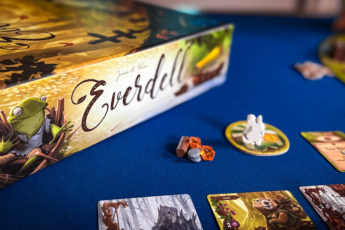Apiary Review + Our Updated Stonemaier Games rankings
“Bees in Space!” is the theme for the newest worker placement game, Apiary by Stonemaier Games. We’re taking a closer look to see how Apiary plays, if it stands out from the other successful Stonemaier worker placement games, and whether the theme is the perfect twist or too far out to land successfully.
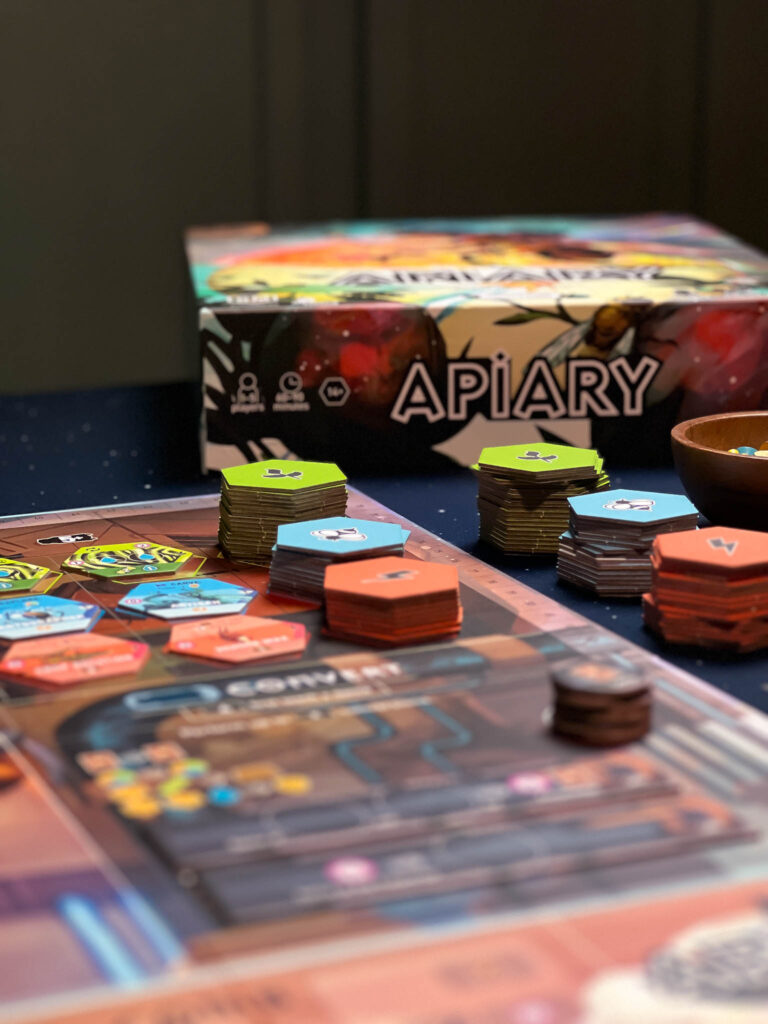
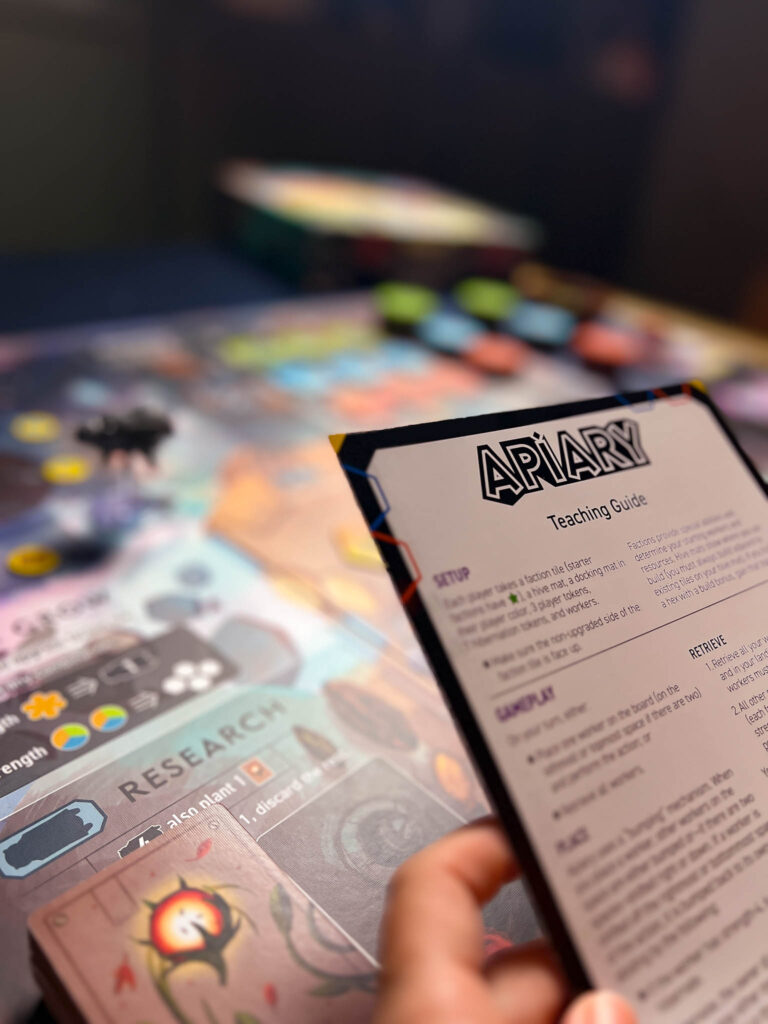
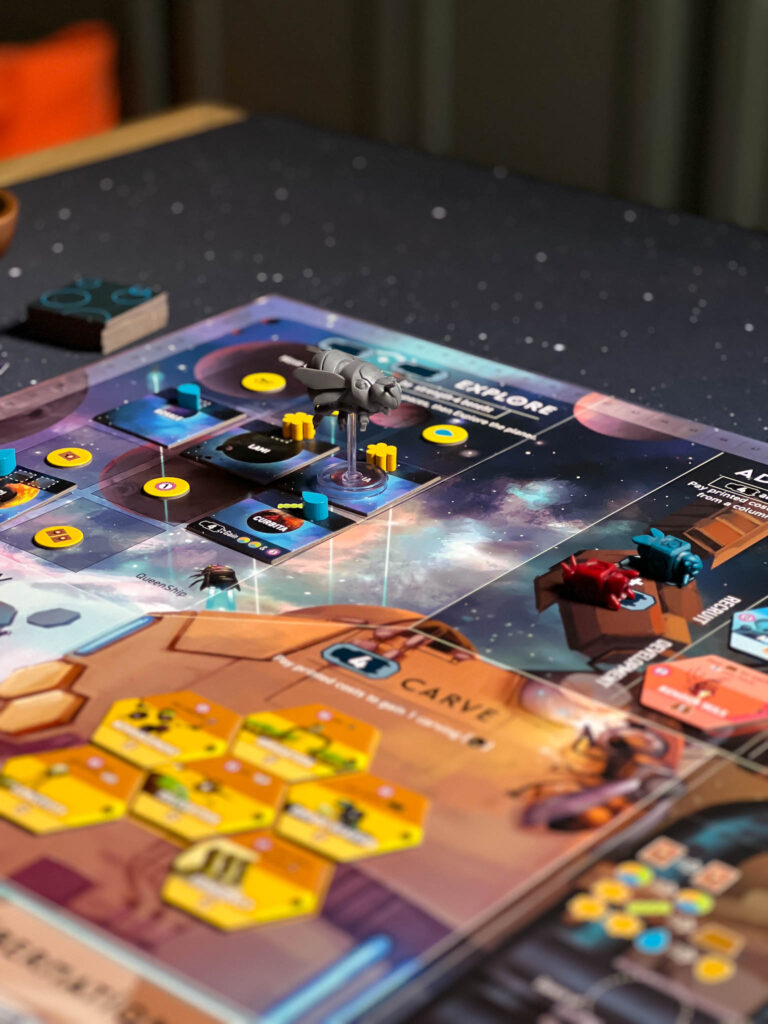
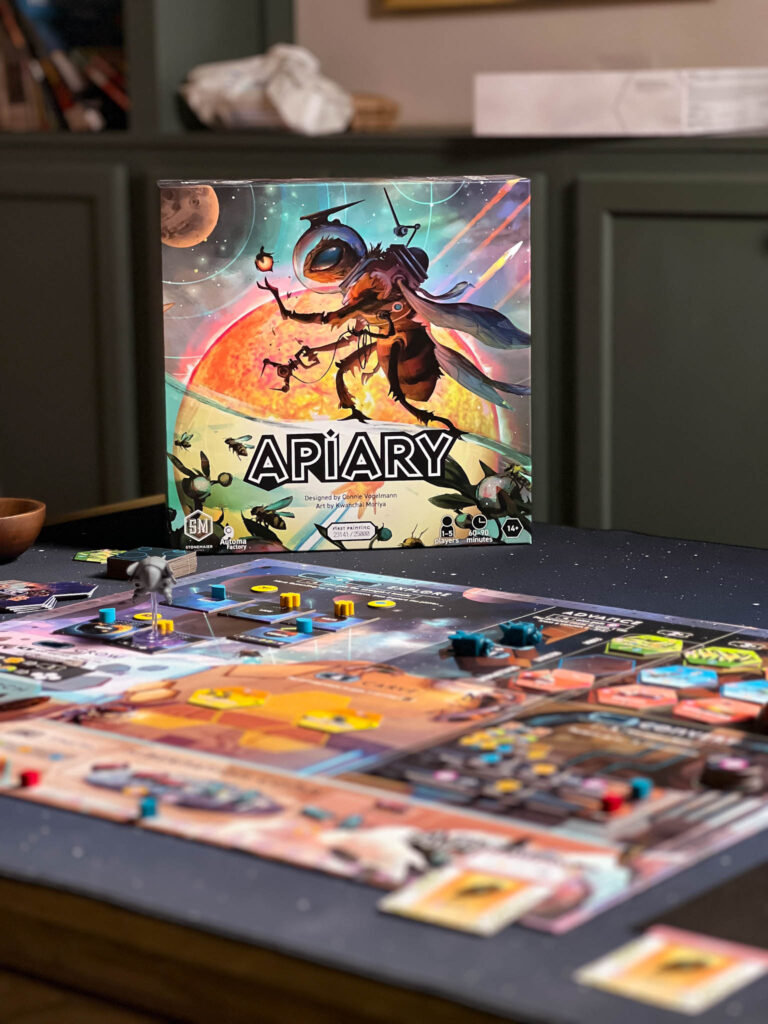
Game Play Overview
In Apairy, players take on the role of bees in space, working to increase their power by gathering resources, expanding their colony, and teaching wiggle dances.
The game offers a unique mechanic where players’ worker bees have a strength value, determining how powerful their action is at a location. Unlike other worker placement games, locations can never be blocked, instead, if you want to use a location where another player’s bee is, you would bump them off the space, giving the player the option to take their worker back and increase its strength. Certain locations require a bee to be at full strength, but once used at full strength, the worker bee hibernates and is no longer usable.
The game ends when a set number of bees hibernates, and the player with the most points wins.
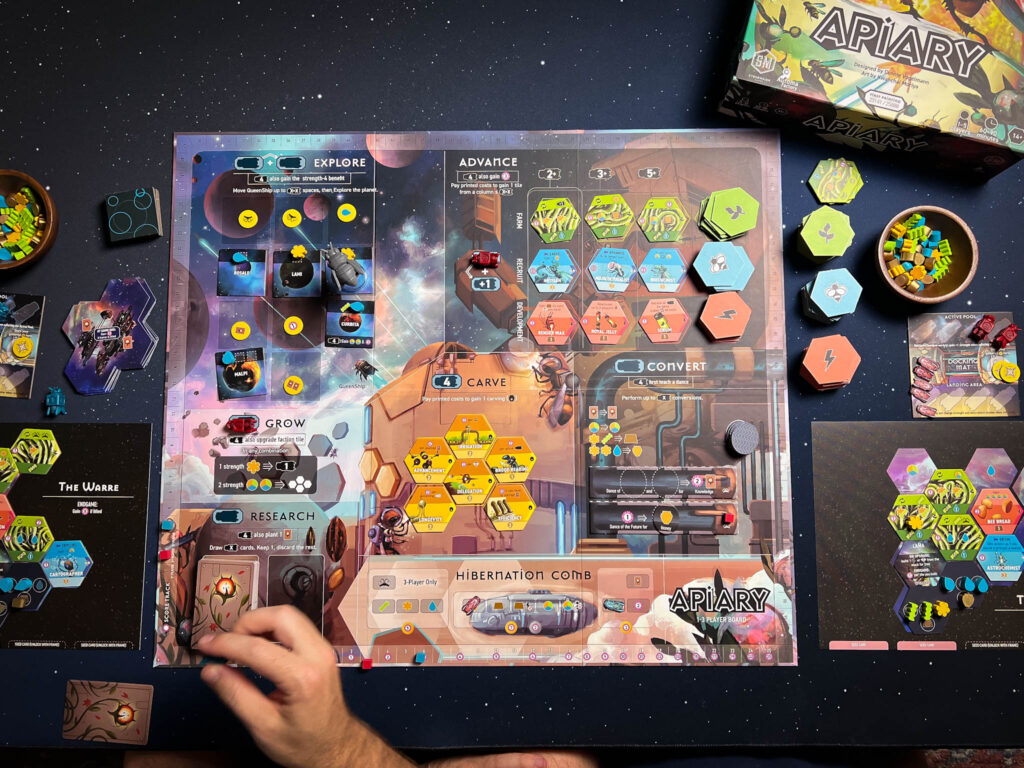
Worker Placement Highs and Lows
One of the standout features of Apiary’s game design was the trade-off of being able to bump an opponent out of a location at the cost of me helping enhance their bee. This adds a positive player interaction element to the game and still provides the limited feeling of not wanting to use certain locations without being restrictive.
I also enjoyed the leveling up of the worker bees and how, at full strength, they could provide a powerful one-time bonus at their locations as well as when it was sent to hibernation. This adds a challenging timing element to the game. Players need to plan ahead to avoid having all their workers hibernate at the same time. If not well timed, this can lead to negative game experience, as in one game, a player had all their bees hibernating three fourths through the game and played out the last quarter with only one relatively weak bee.
This will be something to let new players know to cautiously avoid when you introduce the game to them so that everyone can have a pleasant experience.
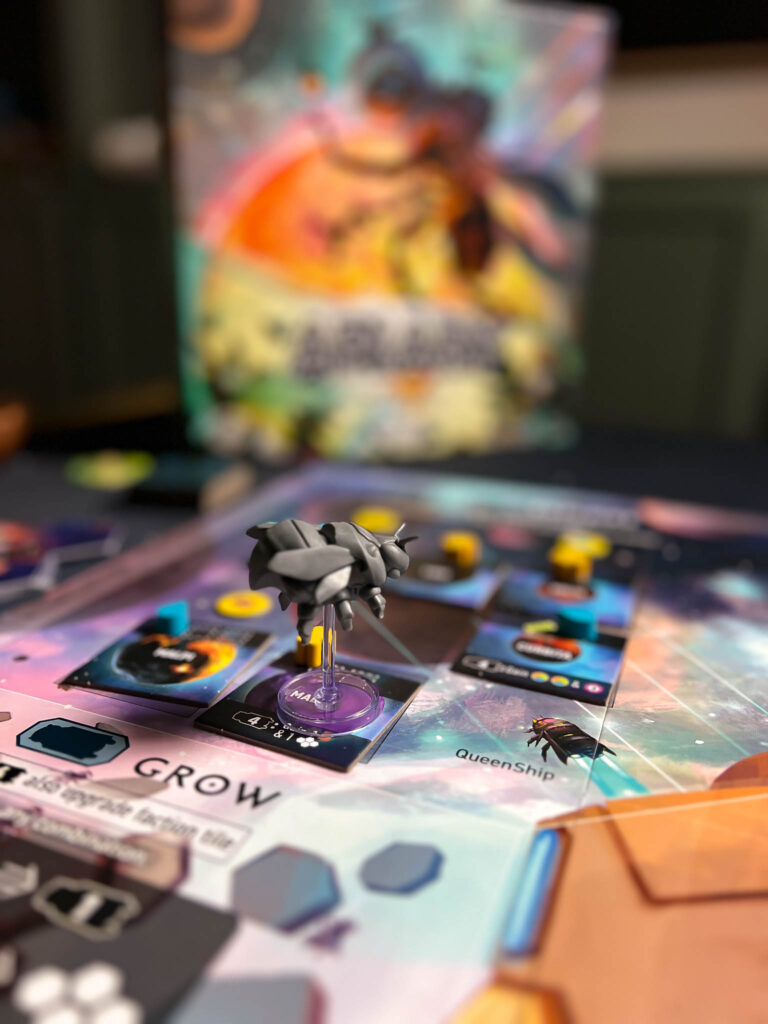
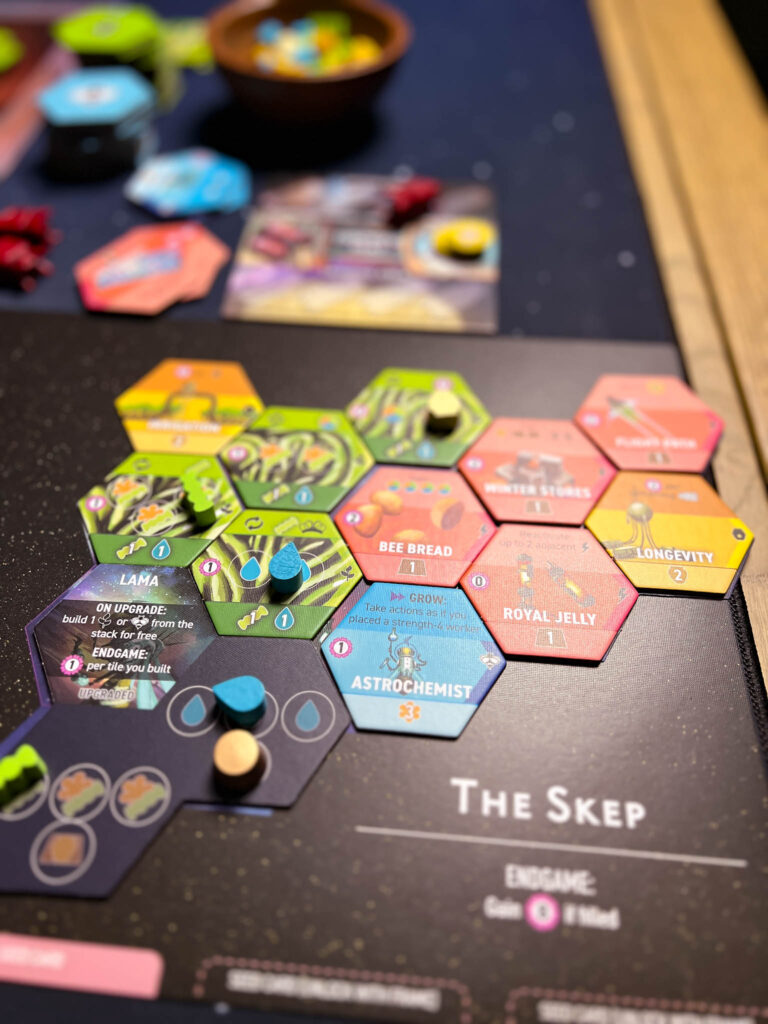
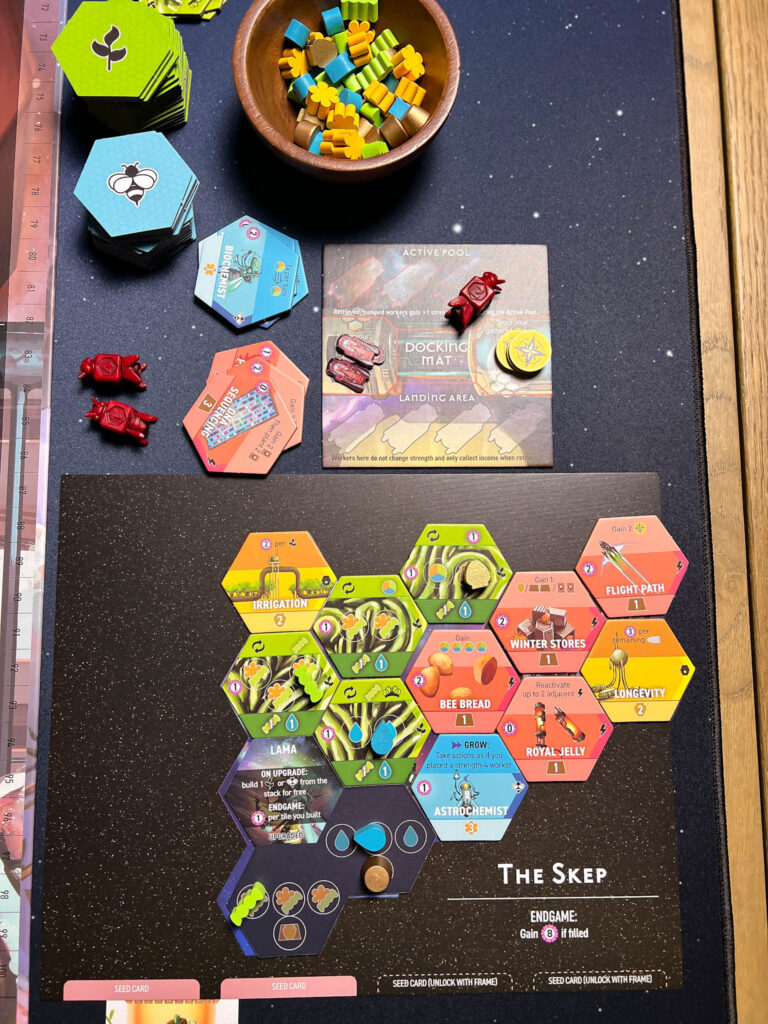
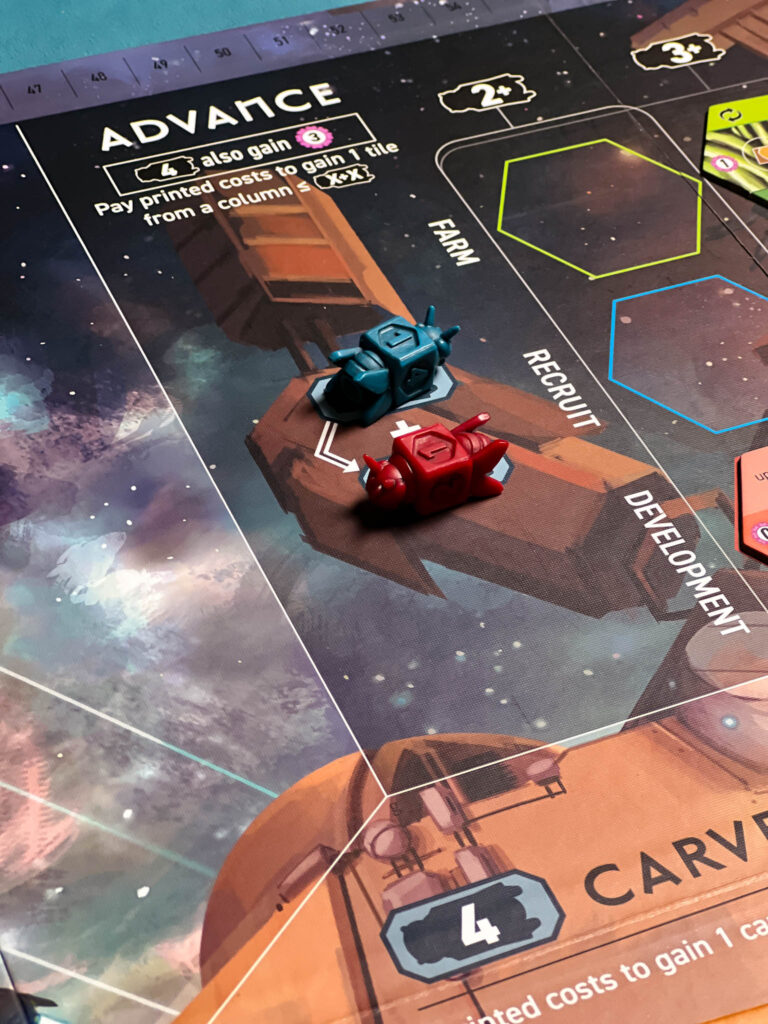
Scoring and Player Powers
Apiary offers different ways to score points, such as the Queen’s Favorite track and scoring tiles earned by placing workers. Each player also has unique powers that can make scoring objectives easier. It’s important to pay attention to these powers and take advantage of them to increase your score. Apiary provides opportunities for strategic decision-making and offers a variety of scoring options. There are multiple paths to achieve high scores if you play to your faction’s strengths.
Luck and Mitigation
While Apiary is primarily a strategic game, luck does play a role in certain aspects. The availability of certain unique powers and the resources needed for exploration can be influenced by luck. The game does provide some cards to mitigate the lack of resources, but players still need to go to specific spaces to obtain them. Luck adds an element of unpredictability to the game, which may or may not be to everyone’s liking.
In our plays, we did experience some frustration when the perfect card we needed was flipped after our turn was completed.

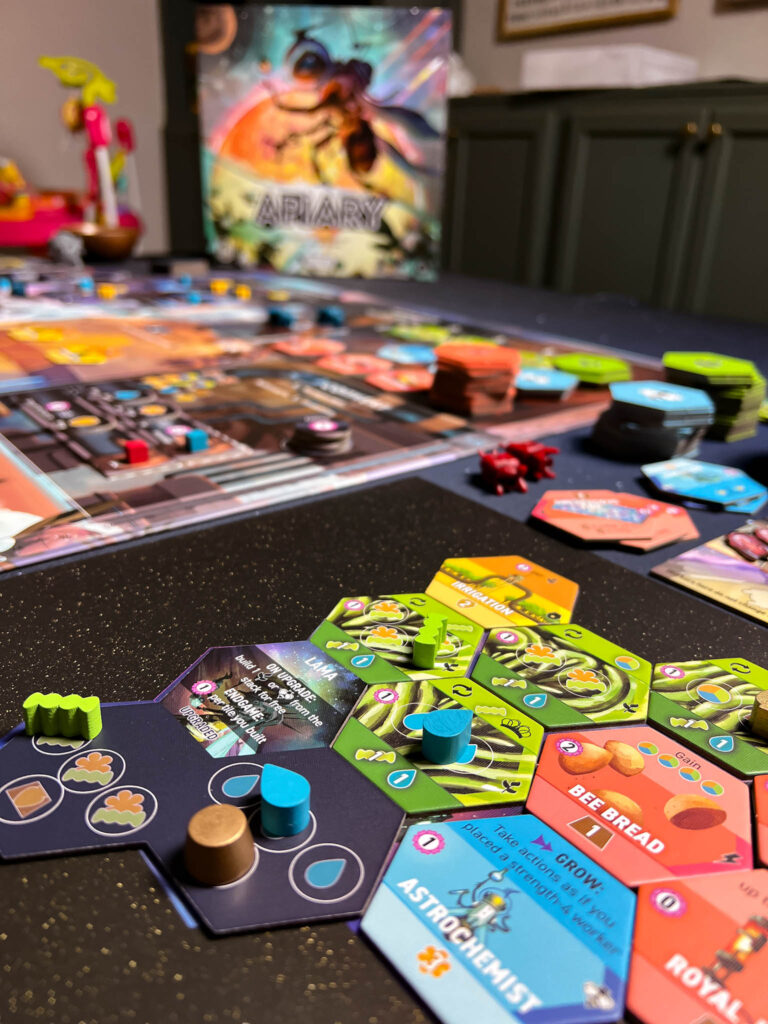
Theme and Presentation
Apiary’s theme of space bees was the most perplexing element of the game.
Apiary strongly feels like it was originally themed around bees as they behave in nature. Everything about the mechanics reflect this. Yet there is this space theme that feels quite literally slapped onto a bee theme for reasons we can’t quite understand. They go together like oil and water; never quite mixing to make a coherent game. This is particularly disappointing because the game itself is enjoyable and, after the wild success of Wingspan, feels like a missed opportunity to make the definitive bee game that is visually stunning, mechanically challenging, and scientifically accurate.
This disconnect of theme is in no way meant as a negative to the art style. Apiary is beautiful and we would love to see more games from artist Kwanchai Moriya in the future.
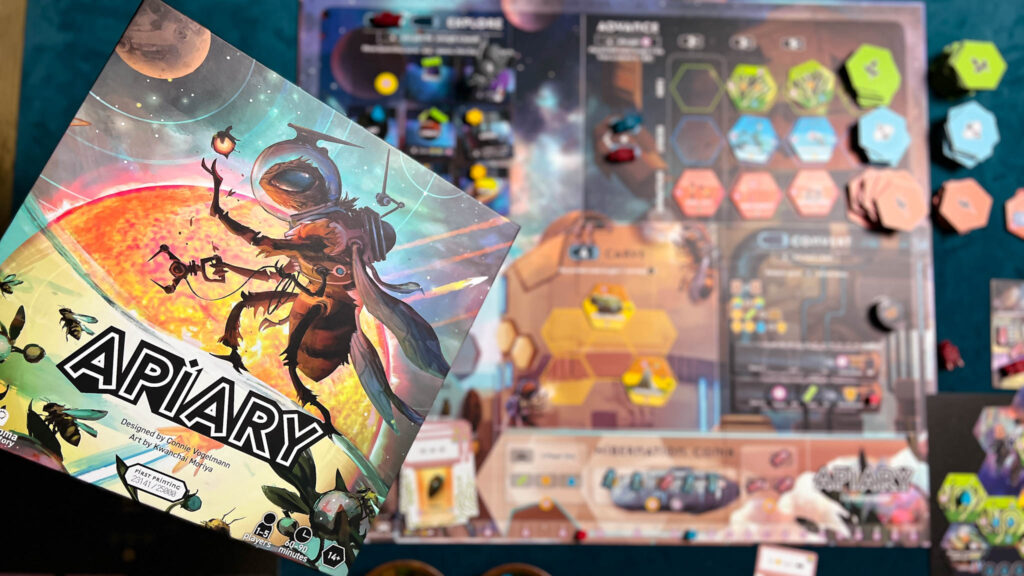
Final Thoughts
Apiary is a solid worker placement game that offers unique mechanics and strategic decision-making. It may not appeal to players who enjoy the tension of being blocked from action spaces, as the game allows players to go wherever they want by bumping bees back to their players. However, if you enjoy worker placement games and want to try something different, Apiary is worth a play. It offers a good balance of player interaction, scoring options, and strategic planning with the only draw backs for us, being the confusing theme choice and moments of frustration with bad card draws and the potential to lose too many workers too early in the game.
We recommend Apiary for fans of the worker placement genre and a worthy addition to the other Stonemaier worker placement games.
Game Info
Title: Apiary
Players: 1-5 Players
Designer: Connie Vogelmann
Artist: Kwanchai Moriya
Publisher: Stonemaier Games
A special thank you to our friends at Stonemaier Games for sending this copy of Apiary for review.
As always, our thoughts and opinions are our own.
Our Updated Stonemaier Games Rankings
Stonemaier has released 16 games and has proven to be one of the best publishers at publishing games with high-quality components and engaging gameplay. We rank every game* and share where their latest release lands amongst their classics. of producing high quality
- Viticulture Essential Edition – Viticulture provides the perfect amount of worker placement tension. The game only gets better with the Tuscany and Viticulture World expansions, both are highly recommended,
- Tapestry – Tapestry’s advancement tracks and resource management challenges is an endlessly replayable joy. Each game feels vastly different depending on your combination of asymmetrical civilization and capital city mats. The game gets even better when you add in the expansions.
- Between Two Castles – Took a good game (Between Two Cities) and made it better by adding an excellent theme and removing the square placement restrictions. It is only this low because it doesn’t play as great at two as our top picks. It is however our top favorite for games of 3 players or more.
- Wingspan – This game deserves all its praise—a great blend of theme and gameplay. I am still very much looking forward to the next expansion. This is the first Stonemaier game I recommend to anyone.
- Scythe – This game has it all: unique player powers, mech miniatures, combat, resource control, map movement, etc., and yet it still plays smoothly and isn’t overwhelming to teach and learn. It is a bigger board game that still feels approachable, which is so special.
- Euphoria – Don’t sleep on this 10-year-old Stonemaier classic feature dice worker placement. We love the Dystopian theme and clever use of dice as workers which keeps it rated highly.
- Apiary – This game lands right in the middle for now, but I can see it rising higher if we get to the table more or dropping if the space bee theme keeps us away.
- Rolling Realms – We continued to be impressed by this roll-and-write. I love how Stonemaier continues to support Rolling Realms with a consistent release of new realm packs.
- Charterstone – This legacy worker-placement game is worth the journey. The fun is in exploring to unlock new crates just as much as it is in winning. Would gladly play the campaign again if asked.
- Libertalia: Winds of Galecrest – One of the best six-player games for anyone who loves predictable chaos. Love all the play and component upgrades to this classic, but I still miss the original pirate art/theme.
- My Little Scythe – A highly enjoyable family game that does an excellent job of taking the essence of Scythe, making it approachable for all games. Highly recommend.
- Between Two Cities – This game has been outshined by its more thematic sequel but is still a really fun game that we recommend you try if you can.
- Red Rising – Heavily inspired by the card game Fantasy Realms, Red Rising looks to add even more to the gameplay, which made the game feel clunky and had me yearning for the snappier pace of Fantasy Realms.
- Smitten – This simple two-player cooperative micro game is fun for what it is, but nothing you need to go out of your way to track down.
- Pendulum – This real-time worker placement game was an interesting idea but ultimately ended up being too fiddly and complex that it felt like work to make it fun. It was also one of the rare times Stonemaier had some poor components in their game.
*Stonemaier Games we have yet to play and that are unrepresented in the above ranking:
Wyrmspan
Expeditions





